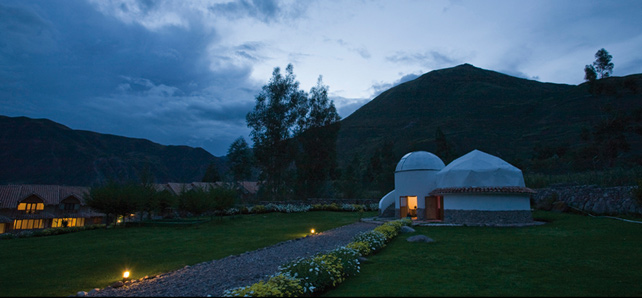Top Destinations for Stargazing
Leave the light pollution behind. See the stars under some of the world’s darkest skies with our top destinations for stargazing.
As light pollution invades the urban city and suburban skies, people are looking to get out of the city to see the stars. We’ve gathered up our top destinations for stargazing. These destinations for stargazing are ideal. Some of them are the darkest places in the world. Other locations have resident astronomers and state of the art technology to help you interpret the skies. If you want to get out and see the heavenly stars, these are the best destinations for stargazing.
Aoraki Mackenzie International Dark Sky Reserve, New Zealand
A dark sky preserve is an area that enables high astronomical observation. Thus, they make ideal destinations for stargazing. The Mount John Observatory is surrounded by the Aoraki Mackenzie International Dark Sky Reserve in New Zealand. It’s the largest dark sky reserve in the world. From the observatory, you can spot the Magellanic Clouds.

Sossusvlei Desert Lodge, Namibia
The NamibRand Desert in Namibia is one of the darkest accessible places on the earth. Although you don’t really need a telescope to make out the Milky Way and zodiac constellations, (just look up) Sossusvlei Desert Lodge’s telescope is state of the art. Their resident astronomer also assists in pinpointing constellations only seen in the southern hemisphere.

Hótel Rangá, Iceland
The observatory at Hótel Rangá is touted as the best in Iceland. The roof of the astronomical observatory rolls off to reveal a spectacular night sky and promises of the Aurora Borealis. There are two computerized telescopes mounted on piers, ideal for astrophotography. Through them, you can see amazing details on Jupiter, Cassini’s Division in the rings of Saturn, and surface details on Mars. It’s open every clear night and includes a guided tour of the night sky by local astronomers.

Casa Andina Private Collection Sacred Valley, Peru
The constellations of the Southern Hemisphere are on full display in the Sacred Valley. Experience the best stargazing in the area at Casa Andina Private Collection’s onsite planetarium and observatory.

Big Bend National Park, Texas, USA
As the song lyrics to Deep in the Heart of Texas go, “The stars at night are big and bright.” Nowhere do those words ring truer than deep into the heart of Big Bend National Park, an International Dark Sky Park. There you’ll find low humidity, infrequent cloud cover, and 2,000 stars, planets, and meteorites on a clear night. Head there in the winter months when the skies are the cleanest and nights are longer.

Awasi Atacama, Chile
The local wildlife and nightly burst of stars are a highlight of any stay in the Atacama Desert. Make the most of your experience by pairing your exclusive Awasi Atacma stay with a morning Astronomical tour of the ALMA. It is like no other facility in the world. A single “telescope” made of 66 individual radio dishes detects light at millimeter wavelengths. It gives unrivaled sharp views of the cold and distant universe and nearby stars and planets. Follow it up with a post-dinner astronomical tour at the SPACE, by Alain Maury. It boasts the largest park of telescopes of any public observatory in South America. Their 70cm telescope is currently the largest touristic telescope in South America.
Six Senses Con Dao, Vietnam
The celestial viewing center at Six Senses Con Dao is the first of its kind in southern Vietnam. With the help of a Maksutov-Cassegrainian 127mm telescope, Saturn, Venus, Jupiter, and our moon’s surface are on full display. Several times a year, celebrity astronomer Dr. Parag Mahajani leads guests in star watching sessions and discussions. In his absence, resident astronomer Georges Erhard takes over and delights guests with his celestial knowledge.

Amanpulo, Philippines
A remote island is an ideal place for stargazing. The night sky reflects the stars above for an incredible celestial display of constellations. And since Amanpulo is the only resort on the island, there’s no other artificial light sources competing with the night sky. There’s also a resident stargazing expert to help you navigate the stars through a Dobsonian telescope.
Longitude 131, Australia
With low humidity and minimal light sources to pollute the sky, the Australian Outback is one of the best places to explore the galaxy. While staying at Longitude 131, guests can partake in the Table 131 experience. It’s a highlight at the lodge. A discussion from a resident astronomer complements dining al fresco under the desert sky. Locate constellations like the Southern Cross and signs of the zodiac, while learning about the significance of the stars and planets in the Aboriginal culture.

Denali National Park, Alaska, USA
If you want to see the northern lights in the United States, head to Denali National Park in Alaska. The fall, winter, or early spring is the time to go because of the long hours of darkness. With six million acres of wild landscape and only one road in the park, you’ll be in for a heavenly night of stargazing.

Leobo Lodge, Leobo Private Reserve, South Africa
There’s nothing like the night skies in the African bush. There’s virtually no light pollution and the sounds of the animals nearby create a distinct soundtrack of melodies for you while you’re gazing at the stars. For astronomy buffs, Leobo Lodge is the place to go for the ultimate star safari. It’s booked on an exclusive basis and has an observatory with two different types of telescopes within the villa. Local astronomers can also be booked to guide you through the stars and planets.

For more information about Ker & Downey’s top 10 destinations for stargazing, contact your Luxury Travel Consultant. For further inspiration, follow us on Facebook, Instagram, and Twitter.
